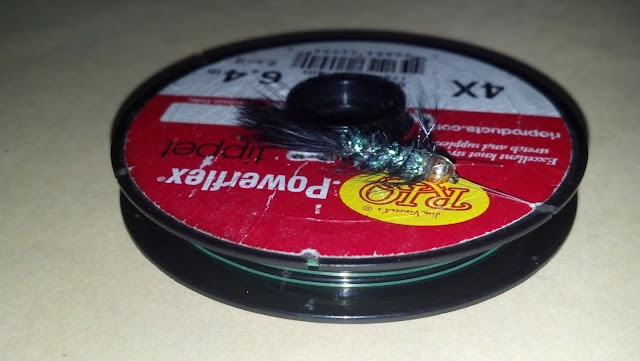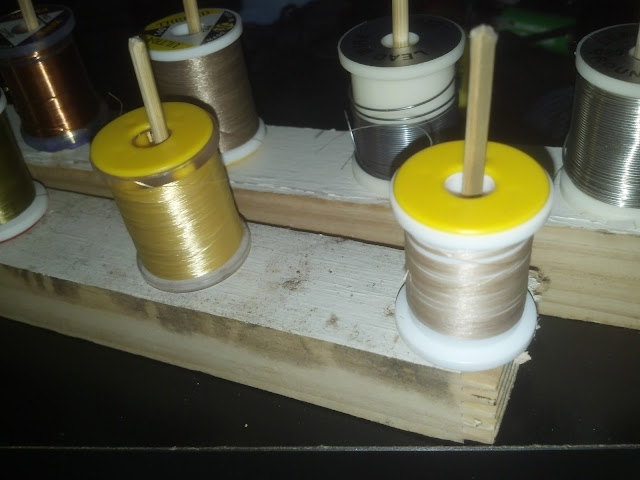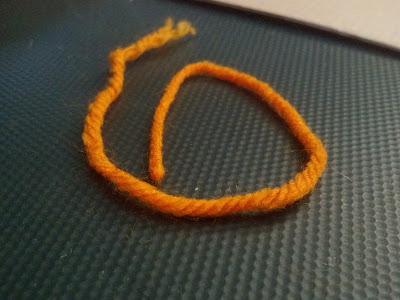It's true I have been bit by the Tenkara bug but, don't worry I have no intentions of going to the one fly method. There is something about a Tenkara rod that just feels DIY. I don't mean in its construction; that is actaully quite impressive for the money one of these setups costs. No, I mean in the simplicity of engineering and the overall basic just use what works idea of it.
I just got back from a two night backpacking trip with my girlfriend in
Henry W. Coe State Park. I asked her to be my GF 6 years ago on a overnight trip to the same park so it was a fitting anniversary trip. Since Henry Coe SP has a lot of small ponds full of bass and blue gill and a few tales of rainbow trout I of course had to bring the Tenkara setup. I didn't have a lot of time to fish because we had miles to make and the GF can only sit and read a book or watch the birds for so long before she gets bored of me hassling the fish. This is where Tenkara really shines. I am overly cautious with my gear (since I seem to break it all the time) so I still kept the rod in its case inside my pack but, even with that I had my rod out and ready to fish in under 5 minutes.So a nice lunch break along the banks of a pond gave me a solid 20 minutes of fishing and with bluegill at the other end that still meant 5 -10 fish or so.
So why does Tenkara beg for such simplicity and DIY? Well it starts with the setup itself. Its just a collapsing rod with a small bit of string called a lillian at the end. Onto that you tie your line of choice, ferled, level, horse hair, etc. etc. then a small section of 5x tippet and finally your fly. That's it and you are ready to fish!! There is just something about such simple design and ease of use that make me want to come up with easy solutions and re-purposing of items to use with my Tenkara.
The first thing I made was a small fly box out of an altoids tin. Yes, yes I know everyone ever makes DIY thing's out of altoids tins but, it is hard to find such small useful and tough containers elsewhere. Easiest way to use the tin for a fly box is to just put the flys in it and close the lid. Which actually isn't a bad idea for a small stream where all you need is caddis flys, parachute adams and a couple copper johns. However, my fumbly fingers like well organized fly box and foam to hold them in place. I had an
old sleeping pad (someone gave me!!) made of tough closed cell foam that I was just using as dog pads for camping so a few slices became recycled as a fly box insert. If I ever make another one of these I may see if I can cut ridges in the foam so the dry flys don't get crushed on the bottom.
So why is a small DIY fly box inspired by Tenkara? Well as you can see in this box I have a few of each style of fly. Some drys, some wet, wooly bugger some copper john looking things (these flys are from early on in my fly tying career). I have every style of fly I need to get at most fish. Tenkara begs for simplicity and one small box that fits in my pocket with a selection of everything I need is as about as simple as it gets.
One product that Tenkara sells call a
line holder falls into the DIY column of only kinda worth doing on your own. At first glance it just looks like a spool with a little foam and a few notches. So I made my own as you can see below. It works, in that it holds my line; although it just doesn't function as well as the Tenkara USA made holder. A friend let me borrow one on our last fishing trip and they just function beautifully. No matter how you wrap, which end you start from or how you want to put that line on there is always a notch, foam bit or crevasse to make that line stay of the spool and allow you to travel with it. It is really designed to allow you to close up shop real quick (say in a backpacking situation) and move to the next spot. I like the challenge of DIY but, in the same way that a Tenkara rod is perfectly designed to do what it does so are these little over priced line holders.

Using an old tippet spool I made some small notches along the outside rim of the spool and some elongated slots for the fly to hook into. I also drilled small holes on the inside part of the spool to put the end of the level line in so it can easily be wrapped. Like I said it works but, no where near as good as the commercial product.














